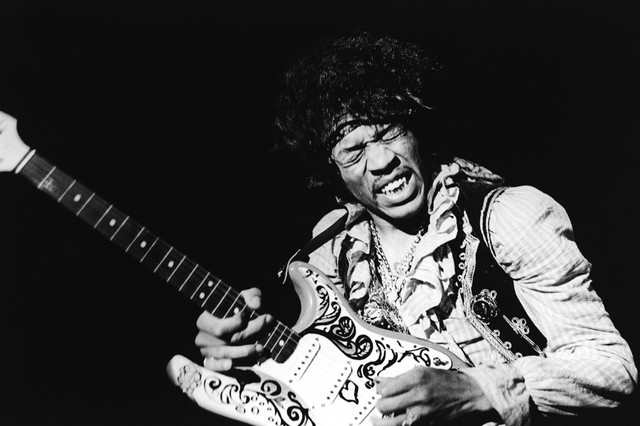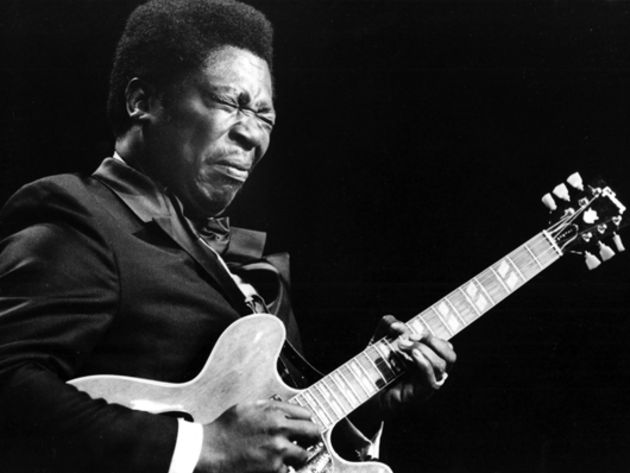Best Guitar Scales for Blues Soloing
Gotcha! That title would definitely have captured my attention when I began to get seriously interested in playing blues guitar.
Among my first inspirations was the initial wave of British guitar heroes (plus Hendrix, of course), and after painfully roughing out a few solos by ear I found what seemed to be the common ingredient: the minor pentatonic scale.

When I began to gravitate toward traditional blues, I thought that it must just be a different scale blend – mix the minor pentatonic with the major pentatonic and add a flat-five now and then – but my attempts to turn scales into legitimate-sounding blues solos never seemed to hit the mark. At the same time, I noticed that traditional blues guitarists never mentioned scales – if they talked about their playing at all, they would usually say something mysterious like “I just play what I hear.”
I was confused: If blues solos don’t come from scales, then where do they come from?
It took a while, but I eventually figured out that “play what you hear” isn’t vague at all – it’s a literal prescription for how to play blues.
Best guitar scales for blues soloing? None of them – here’s why:
Major, minor, and blues
B.B. King’s solo on “Sweet Little Angel” (Live at the Regal) literally makes the people scream out loud – whatever he’s doing, it’s way past mixing pentatonic scales. Blues is a sophisticated musical language that originated in Africa and was passed down through multiple generations before the notes were ever written down; it isn’t major or minor, it’s both and then some. B.B. learned the language by ear, mastered it, and has returned the favor by passing it down to us – it can’t be reduced to a formula, but it’s there for us to take whenever we want it.
Three-dimensional phrasing
Scale patterns put the musical emphasis on note choices, but notes are just one dimension of a phrase. The other two dimensions, timing and touch, are at least as important, and in some players’ styles they are the main focus. For example, listen to Albert King’s solo on “Personal Manager;” his timing (including his use of silence) and touch (attack, dynamics, and inflections) elevate what is basically a five-note melodic vocabulary into a profound musical statement. Calling King’s solo “minor pentatonic licks” is like calling the Mona Lisa ‘a picture of a girl.’
Ears before Eyes
Relying on scale patterns unconsciously encourages you to make musical decisions with your eyes and fingers rather than your ears. Once you memorize a fingering pattern, it becomes all too easy to stop listening and just watch your fingers move around the neck, a phenomenon I have both experienced and observed countless times as a teacher. Many students are dependent on tabs (and I am guilty of providing them), but relying on notation in place of your ear weakens your musical judgment and misses the essence of blues.
Singing and Songs
Most of the great blues guitar influences are also powerful singers who play guitar like a second voice. Singing helps to create an intuitive understanding of melody, breathing, phrasing, and form plus the connection between notes and feelings, elements that are all essential to any great blues solo. Even if you don’t sing, learning vocal melodies on the guitar and playing songs, not just jams, will help take you beyond patterns and into the deeper musical qualities of blues.
Play What You Hear
When I was trying to solve the blues riddle with scale patterns, I actually was ‘playing what I heard,’ but I was hearing scales, not blues. When I started listening to blues in depth the scale patterns didn’t disappear, but they gradually faded into the background as I replaced them with ‘real’ phrases. Eventually I began to hear not just my influences, but myself.
Each of us creates a unique and ever-evolving matrix of knowledge, skill, experience, influences and original ideas that guides our musical choices, but at any point along the way we’re all just playing what we hear. “Best scales for blues soloing” – who wants to hear that? Listen to B.B. and let him show you how to make ‘em scream.

Learn blues guitar online with Keith Wyatt at ArtistWorks! Click here for free sample lessons.
Related Blues Guitar Blogs:








Comments